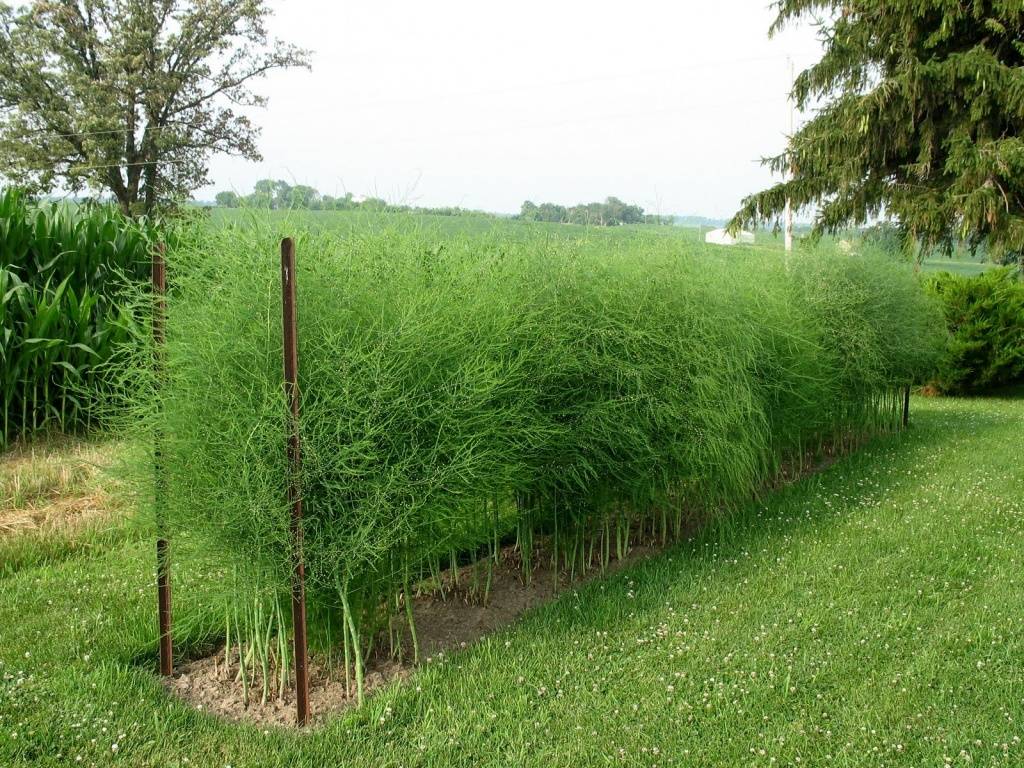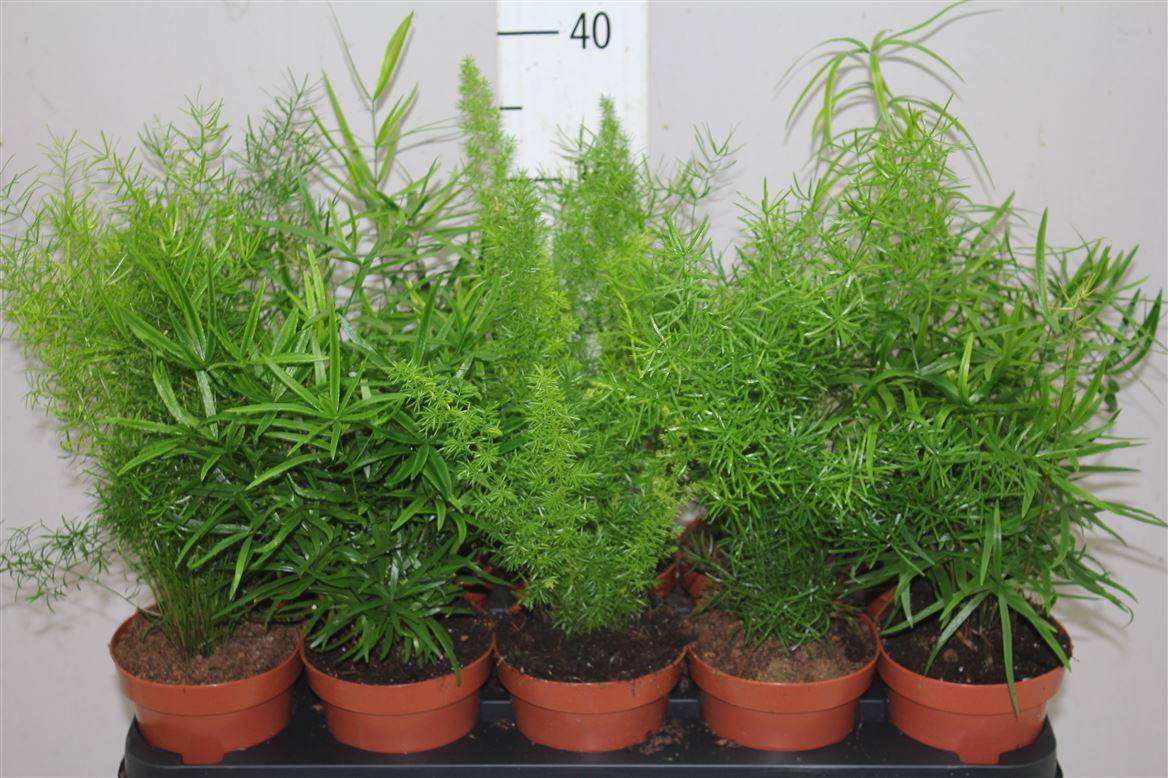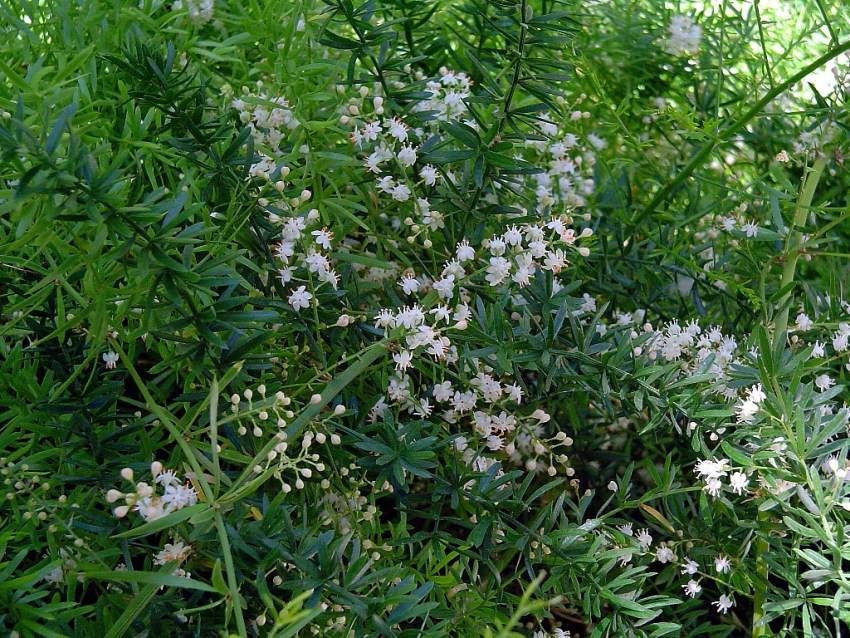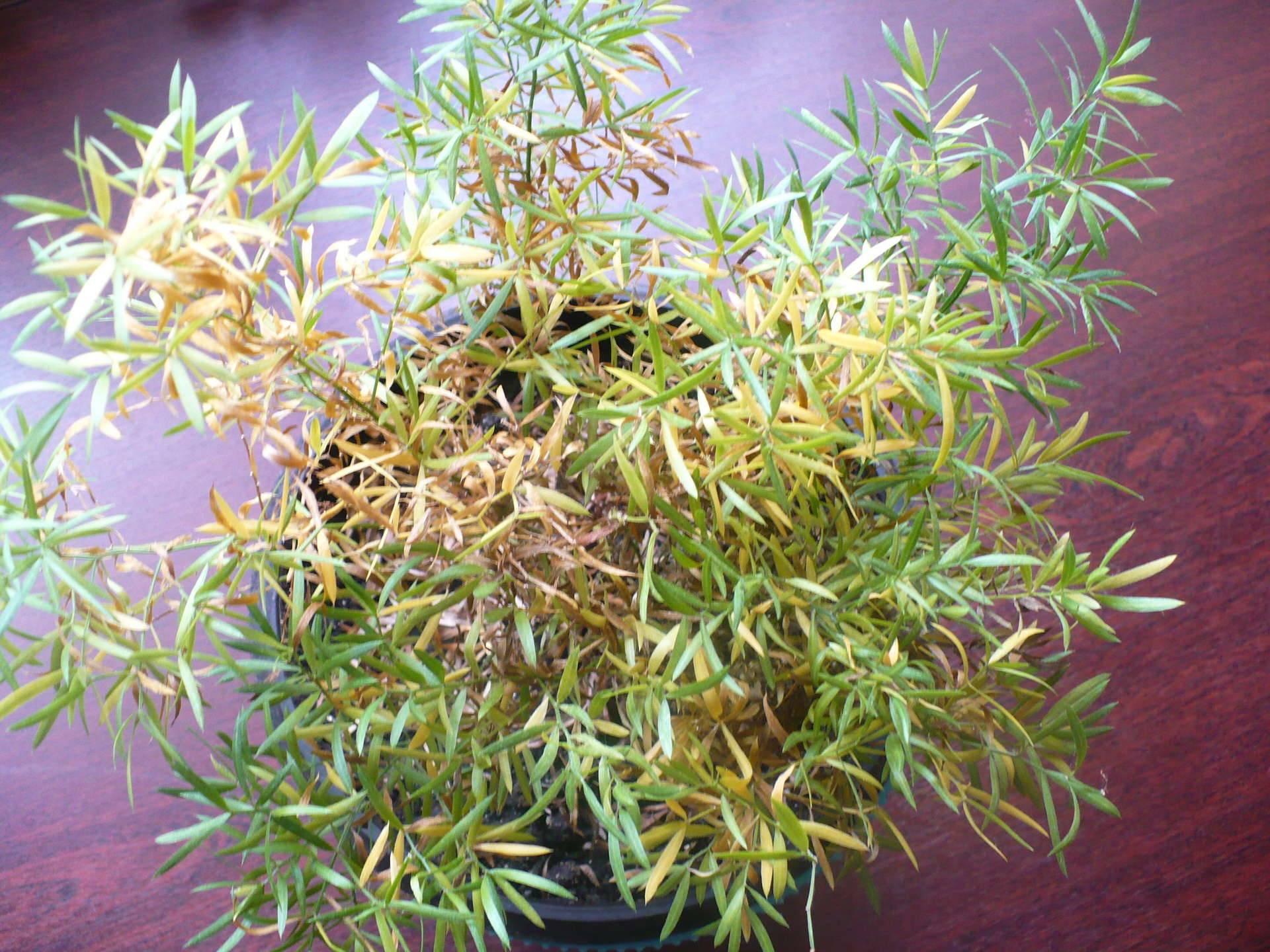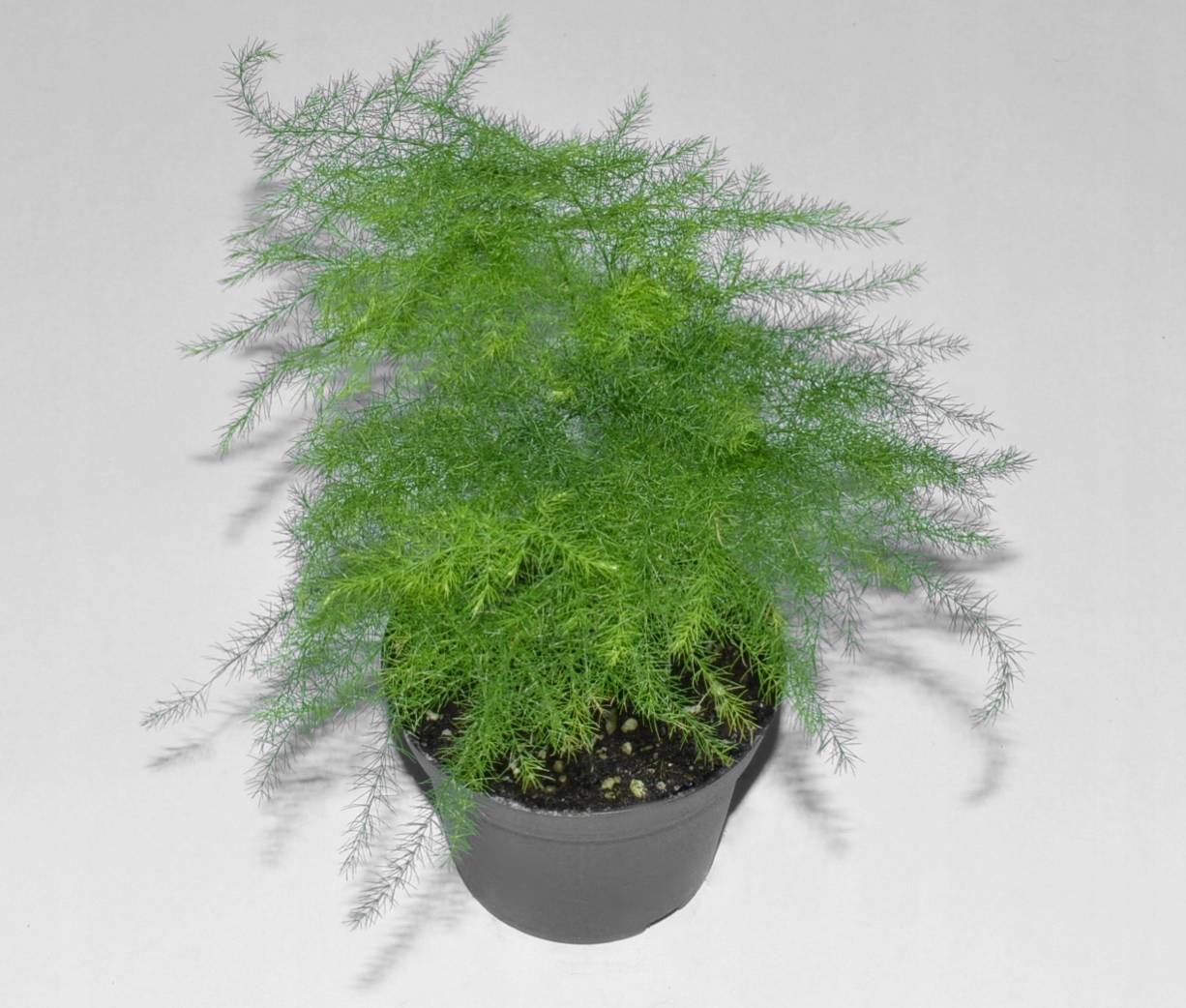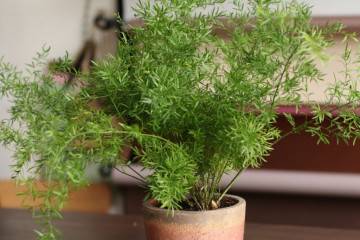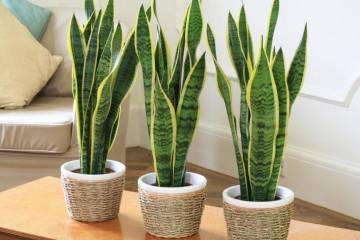Asparagus flower - home care
Content:
Interior element, nutritious product, medicine - these are all characteristics of asparagus (or asparagus). The plant gained popularity in ancient times. The vegetable was part of the diet of the Romans and Egyptians, and the Greeks wove wreaths for newlyweds from greenery.
What is asparagus: description and types
Perennials of the asparagus family are called asparagus. The species composition, numbering about 300 representatives, includes shrubs, vines and grasses.
Asparagus began to be cultivated in the Mediterranean about 5,000 years ago. In the 18th century. she was brought to Russia. Due to the high cost, the product received the popular name "master's vegetable".
Asparagus are native to the wild, cultivated as a vegetable, and are grown for ornamental purposes.
Variety of species
Among the plants used for culinary and medicinal purposes, the following types are common:
- medicinal asparagus or common asparagus (asparagus officinalis);
- white asparagus;
- green asparagus;
- asparagus asparagus (asparagus asparagoides).
Vitamin C, nicotinic and chelidonic acid, thiamine, saponins, coumarins, essential oils, amino acids, potassium contained in medicinal asparagus make the product useful in the treatment of diseases of the respiratory and urinary systems. Asparagus extracts help lower blood pressure. Infusions from the greens of the common asparagus plant are used to combat dandruff and hair loss.
Thanks to the fiber, antioxidants and trace elements that make up asparagus, the plant has become a useful ingredient in side dishes and salads.
The so-called "Korean asparagus" is found on store shelves. The name may lead the buyer to think that it is asparagus. In fact, the product has nothing to do with the asparagus family. is a semi-finished product from soybeans (fuzhu).
Among the variety of asparagus, decorative species are widely represented. The following asparagus are the adornment of garden plots and home interiors:
- feathery (plumosus) or bristly (setaceus);
- asparagus (asparagoides);
- Sprenger (sprengeri);
- medeoloides;
- racemose (racemosus);
- sickle (falcatus);
- Meyer (meyeri);
- the thinnest (benuissimus).
The content in the apartment is suitable for a large number of representatives of the asparagus family, therefore asparagus is popular with flower growers.
Indoor asparagus: home care
In order for the flower not to lose its decorative qualities, it is necessary to properly care for it.
Seat selection
When placing a plant on a windowsill, preference should be given to the western and eastern sides. In the north, asparagus will lack light. The scorching sun in the south can damage the greenery.
Temperature regime
The setting of the temperature in the apartment depends on the season. In the summer months, indoor asparagus prefers warm air from 22 to 24 ° C, in the winter - from 10 to 15 ° C.
Timely hydration
A prerequisite for caring for a perennial is regular watering. It is produced as the soil dries up, on average - 3 times a week. From November to March, when the plant does not develop very actively, the amount of watering is reduced.
Spraying and water bathing has a beneficial effect on the appearance of asparagus. An indoor flower will feel good next to a container of water or a humidifier.
Soil composition
The asparagus flower prefers a light soil that allows air and moisture to pass through. The mixture consists of turf, humus, sand and leafy soil in a ratio of 1: 1: 0.5: 1. The optimum pH level is 5.5-7.0. Sand is an essential drainage component.
Top dressing
Fertilization of the soil is carried out during the period of active growth (mid-April - mid-October). 2 times a month, the rest of the time - 1 time. After transplanting and during plant illness, the soil is not fertilized.
For feeding are used:
- mineral complexes (Kemira, Agricola, Radifarm, Effekton);
- organic (infusions of nettle, tea, banana peel, slurry);
- growth-promoting supplements.
Only crescent asparagus is allowed to be trimmed. It is also possible to remove dry and diseased shoots of an adult plant.
Bloom
A flowering perennial is often found in the wild or in garden plots. White flowers are small. Inflorescences are located on the top of the stem.
Asparagus is a dioecious plant: it can bloom with both staminate and pistillate flowers. The process takes an average of 2 weeks. At this time, pollination is carried out with the help of a brush, which allows you to get fruits. They are not suitable for human consumption, but are an adornment for flower bouquets.
With careful care, asparagus blooms at home can be achieved. However, inflorescences in indoor perennials appear extremely rarely.
How to propagate asparagus at home
The main methods of breeding asparagus:
- planting seeds;
- division of the rhizome;
- grafting.
How asparagus reproduces using seeds
In the first quarter of the year, the seeds are placed in a moistened mixture of peat and sand, which is then regularly sprayed. To grow seedlings, you must observe the temperature regime - 20-21 ° C. Seedlings appear in 4 weeks. When the seedlings reach 7-10 cm, a pick is made.
The beginning of June is the time for plant transplants. Asparagus is placed in a pot with a diameter of 10-12 cm with a mixture of turf, leafy earth, humus and sand. Don't forget about the drainage layer.
Splitting the bush
Reproduction by dividing the rhizome is carried out during transplantation. Asparagus begins to be replanted when the plant reaches four years of age. Before the procedure, the soil is abundantly moistened. After 2-3 hours, you can start dividing the root system, while removing the old tubers.
Drainage is first poured into the pot for the new settler. After placing the separated asparagus in the soil, the plant is watered.
Rooting cuttings
To propagate the plant, in early spring, the cuttings are placed in wet sand and covered with a glass jar. From time to time it is removed for airing. Moisture is maintained by regular spraying.
Questions arising when growing a flower
If you do not follow the basic rules of plant care, asparagus can lose its rich green color, thin out or die.
What to do if asparagus turns yellow and crumbles
This problem occurs for the following reasons:
- lack of moisture and direct sunlight (leaves have brown spots from burns);
- high temperature and lack of illumination (if there are no traces of burns);
- frequent drafts;
- overgrown root system.
It is necessary to rearrange the plant, plant it if necessary, create an optimal temperature regime and take care of proper watering.
Why does the plant shed buds and leaves
This problem can be caused by:
- lack of nutrients;
- the action of pests;
- inappropriate temperature, humidity, lack or excess of light.
Lack of nitrogen and iron forces the asparagus to "get rid" of the foliage. For the growth of greenery and the formation of buds, it is necessary to feed the flower.
It is necessary to deal with pests in a timely manner. Spider mites, aphids, wax worms and scale insects can cause irreparable harm, up to the death of the flower.
The magical benefits of a houseplant
One of the types of asparagus - bristle asparagus (asparagus setaceus) is popularly known as a flower that has a calming effect on the emotional state of a person. It is believed that the presence of this plant in the house helps to avoid violent quarrels. Flower care is soothing and relaxing after a busy day.
Indoor representatives of the asparagus family are distinguished by a varied appearance and unpretentiousness. Growing asparagus does not require much experience in floriculture and is available even for beginners. Thanks to this, the plant has gained popularity and is often found in the interior of residential and office premises.
